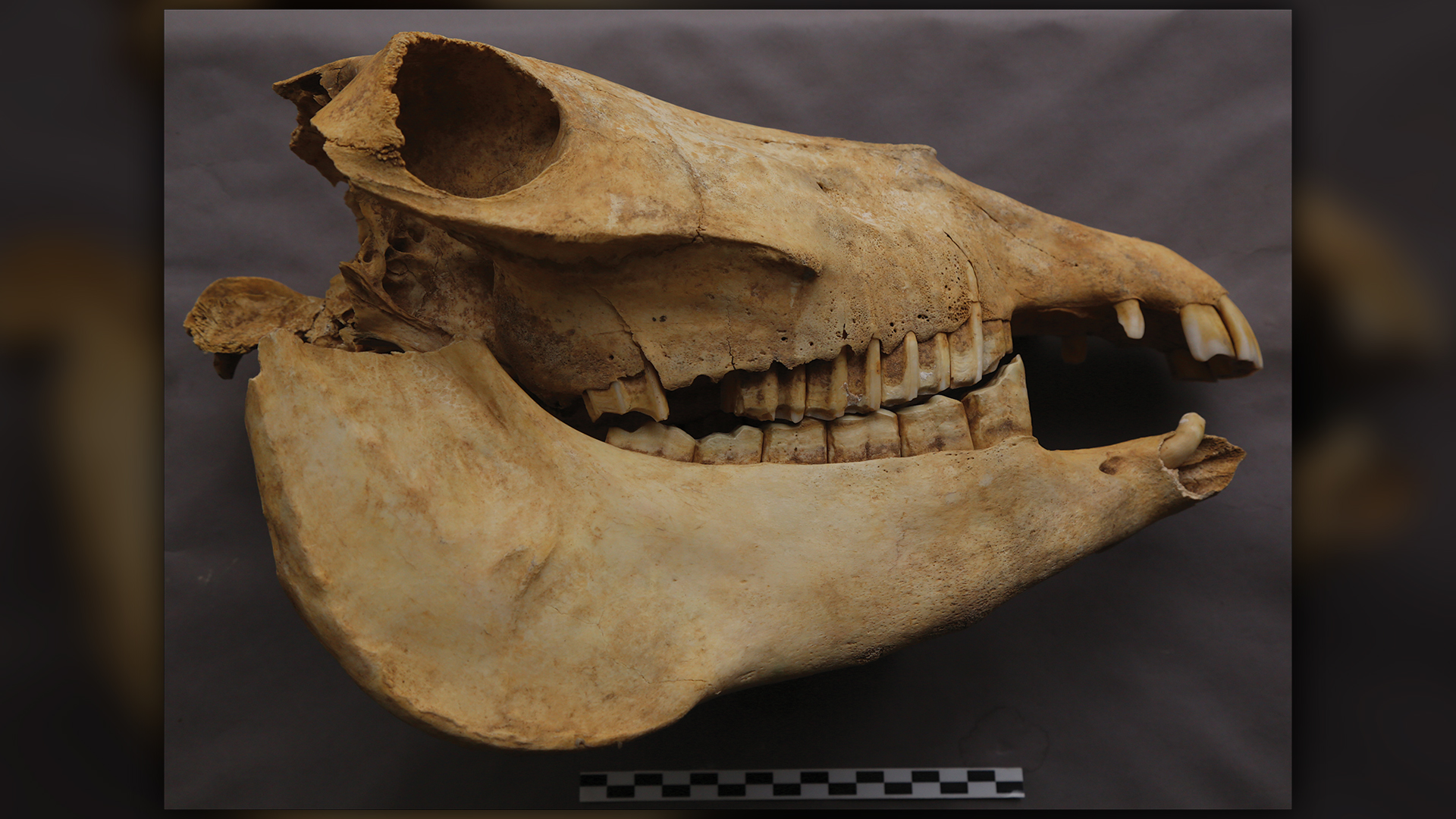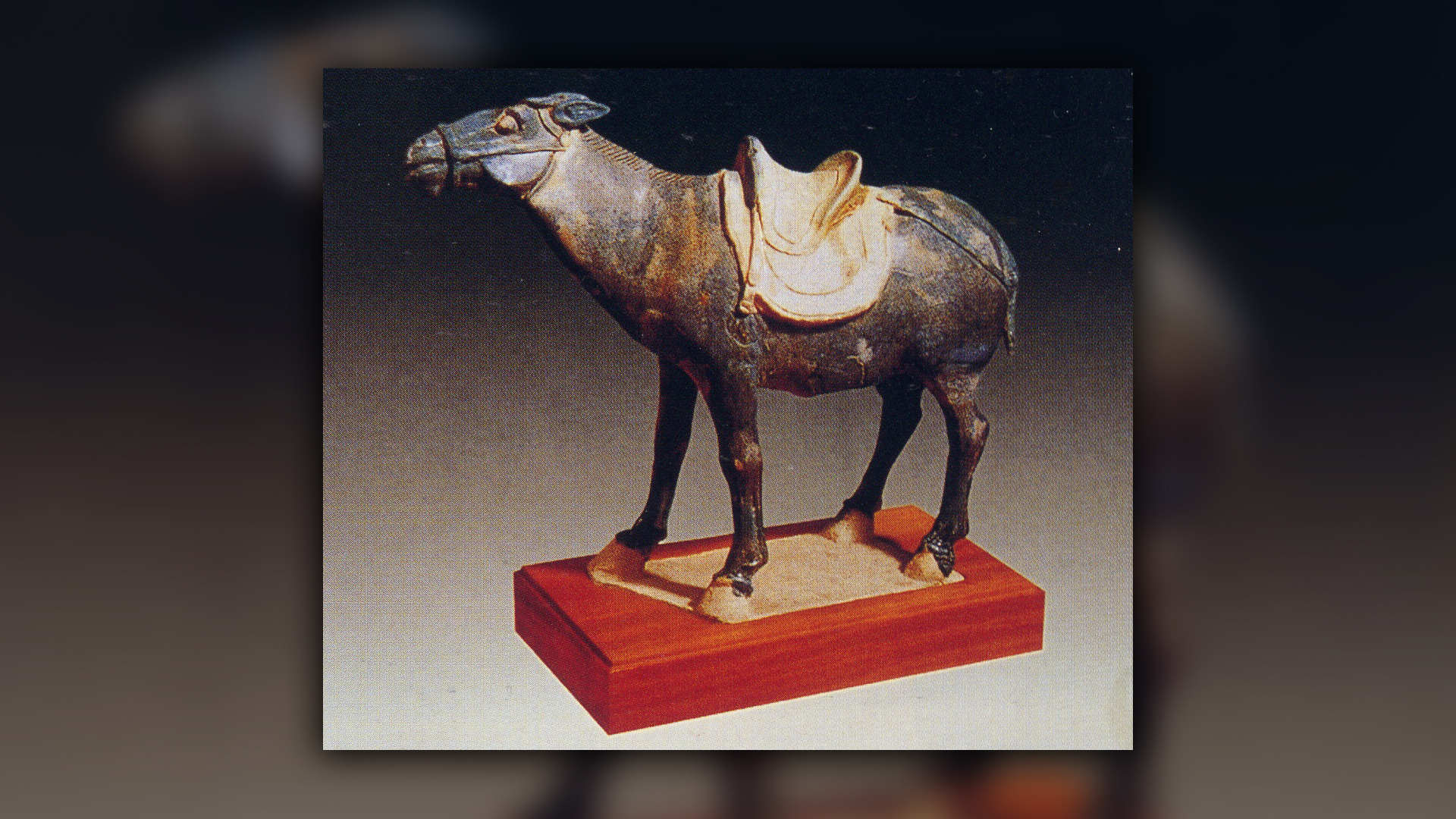First proof of donkey polo in ancient China found in noblewoman's tomb
Polo donkeys were considered a safer option than horses.

Scientists recently found the first evidence that nobles in imperial China played donkey polo, in the tomb of a wealthy, important woman who died in Xi'an more than 2,000 years ago.
The woman, named Cui Shi, was buried with donkeys, possibly so she could keep playing donkey polo in the afterlife, researchers reported in a new study.
Cui Shi's tomb had been ransacked before its discovery, and looters stripped it of most of the burial artifacts. But they left behind the bones of animals that were buried alongside her, which included donkeys. The donkeys' presence in an elite woman's tomb suggests that they were far more important than lowly pack animals, and may have been the donkeys that Cui Shi rode during polo matches, the scientists wrote in the study.
Related: Image gallery: Bronze Age donkey burial
For thousands of years, people have used donkeys (Equus asinus) as beasts of burden, while horses were more commonly prized for their speed, agility and beauty. But the ancestor of domesticated donkeys, the African wild ass (Equus africanus), is also beautiful, graceful "and very fast," said study co-author Fiona Marshall, a professor in the Department of Anthropology at Washington University in St. Louis.
It's therefore not surprising that the wild ass's donkey descendants would be considered good choices for playing polo, even if donkey breeding selected for slower and steadier animals than wild asses, Marshall told Live Science. And unlike horses, donkeys' wild relatives are solitary animals. This makes them more independent and less likely to spook and run away when startled, as horses often do, Marshall explained.
"They're very sensible. They make decisions about danger and they don't have a strong flight response, they won't bolt with you," Marshall said. This trait would have made donkeys a safer option than horses for polo games, which were popular during that time in imperial China, but could also be quite dangerous — Cui Shi's husband is known to have lost an eye during a polo match, Marshall added.
Sign up for the Live Science daily newsletter now
Get the world’s most fascinating discoveries delivered straight to your inbox.

A number of accounts from the Tang Dynasty (A.D. 618 to 907) even suggested that nobles would use polo matches as opportunities to murder their enemies, by tripping up a player's horse and then galloping over the rider when he fell, Marshall said.
"If you wanted to be a bit safer, it would make sense to play on donkeys," she said.
Cui Shi's donkeys were sacrificed and placed in the tomb at the time of her death, in A.D. 878; a carved epitaph in the chamber described who she was, and analysis of the animal skeletons revealed that the beasts were small donkeys that had been well-fed, "with access to domestic grains," the study authors reported.
When the tomb was first discovered in 2012, it was thought that the donkeys were pack animals. But when scientists examined the donkeys' bones for the new study, they found that not only were the donkeys smaller than average, the shafts of their leg bones were thicker than was typical in donkeys, suggesting that the animals had a different type of gait than donkeys bred for carrying heavy loads at a slow and steady pace.
This provided the researchers with another piece of evidence that the donkeys were ridden during polo matches, in which animals must quickly stop, start and change direction at high speeds.
"Given the importance of polo in that time and place — and in her family — and the unusual locomotion of these donkeys, we came to conclude that they were very likely used for polo," Marshall said.
The findings were published online March 16 in the journal Antiquity.
- In photos: Ancient shipwreck's ceramics traced to kilns in China
- Gallery: Ancient Chinese warriors protect secret tomb
- In photos: China's terracotta warriors inspired by Greek art
Originally published on Live Science.
OFFER: Save at least 53% with our latest magazine deal!
With impressive cutaway illustrations that show how things function, and mindblowing photography of the world’s most inspiring spectacles, How It Works represents the pinnacle of engaging, factual fun for a mainstream audience keen to keep up with the latest tech and the most impressive phenomena on the planet and beyond. Written and presented in a style that makes even the most complex subjects interesting and easy to understand, How It Works is enjoyed by readers of all ages.

Mindy Weisberger is an editor at Scholastic and a former Live Science channel editor and senior writer. She has reported on general science, covering climate change, paleontology, biology and space. Mindy studied film at Columbia University; prior to Live Science she produced, wrote and directed media for the American Museum of Natural History in New York City. Her videos about dinosaurs, astrophysics, biodiversity and evolution appear in museums and science centers worldwide, earning awards such as the CINE Golden Eagle and the Communicator Award of Excellence. Her writing has also appeared in Scientific American, The Washington Post and How It Works Magazine. Her book "Rise of the Zombie Bugs: The Surprising Science of Parasitic Mind Control" will be published in spring 2025 by Johns Hopkins University Press.











